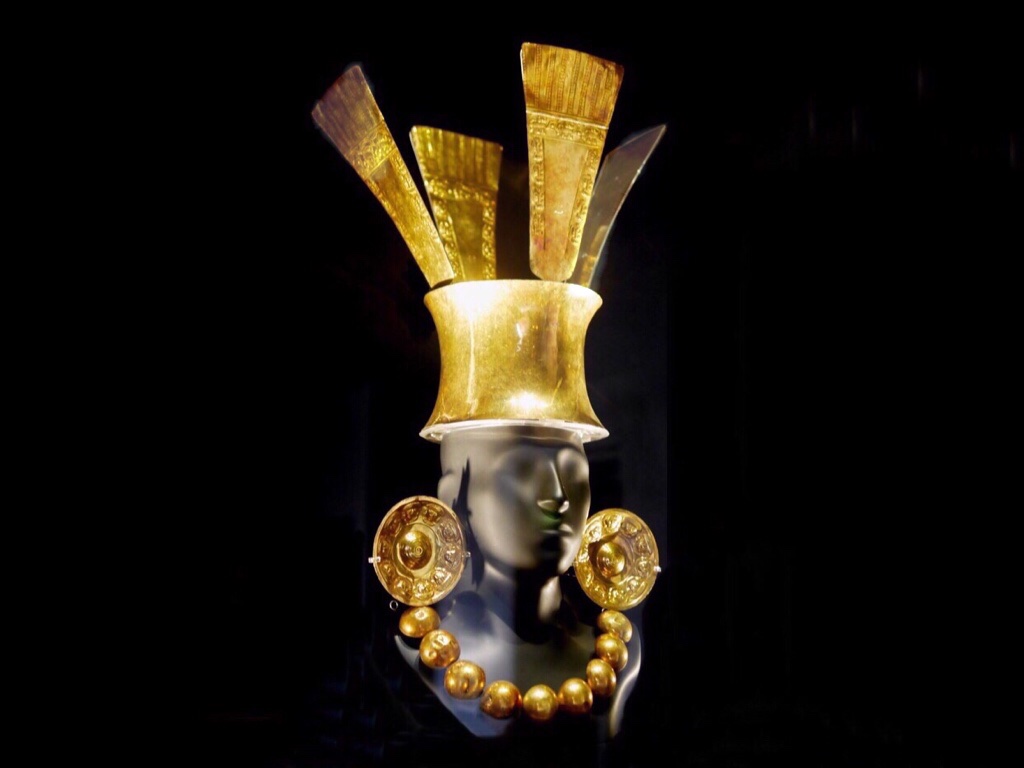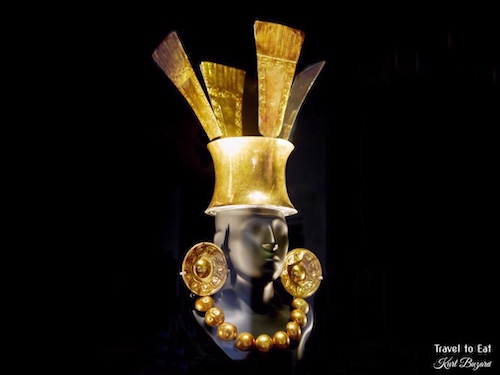
“Throughout history, clothing has not only protected us from the natural elements, it has also enabled us to demonstrate who we are. Our clothing and adornments indicate our gender and social position, as well as our origins and what we do. In all ancient societies, the elite employed ways of defining themselves. In ancient Peru leaders would dress and adorn themselves with articles exclusive to their social rank. They would preside over the principal ceremonies wearing garments and ornaments which not only denoted the function they performed, but which also displayed the religious codes of their society and the emblems of power and privileged status. Their social position and identity were defined by their dress, crowns and many items of jewelry. When they died they took with them into the afterlife objects which expressed their way of seeing the world. They were interred with the ritual attire which had identified their rank during life, and which had marked them out as the descendants of the gods. Their identity transcended their earthly existence and accompanied them into the next world. After death, these rulers would be transformed into ancestors who would share a place in the celestial world with the gods.” Larco Museum
Gemstones, Shells and Bone
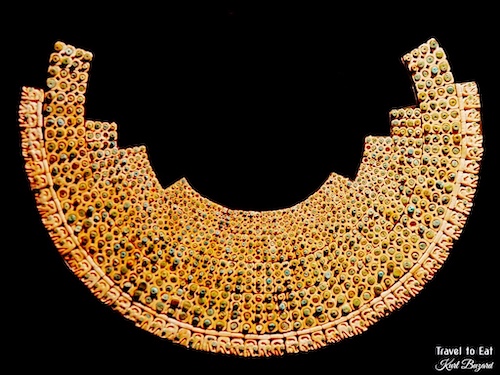
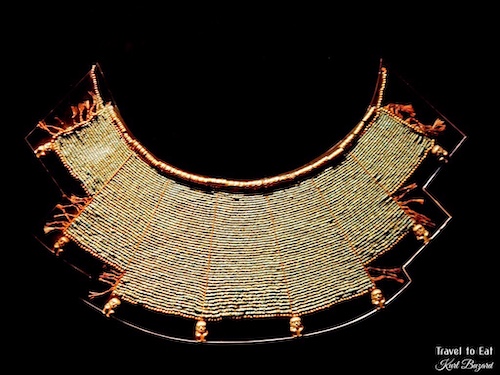
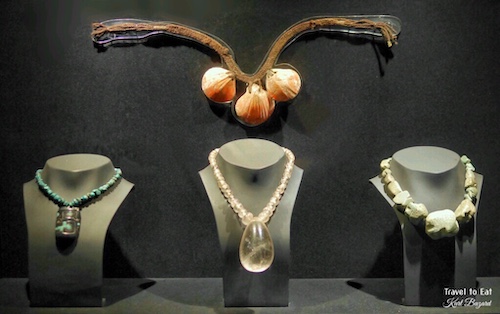
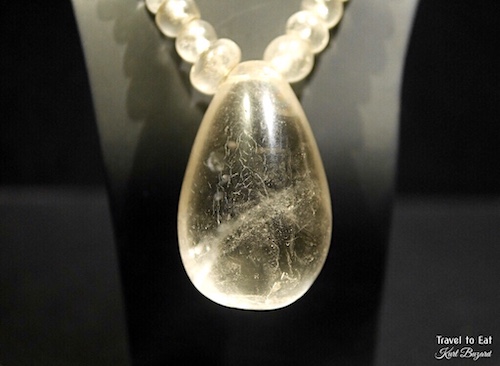
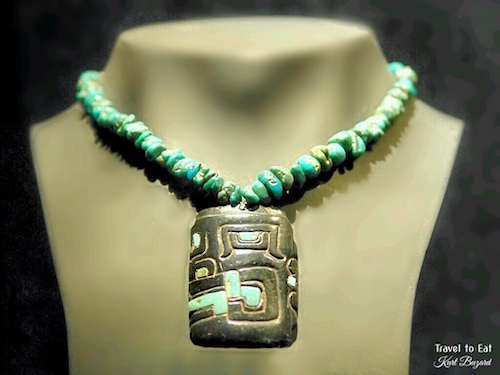
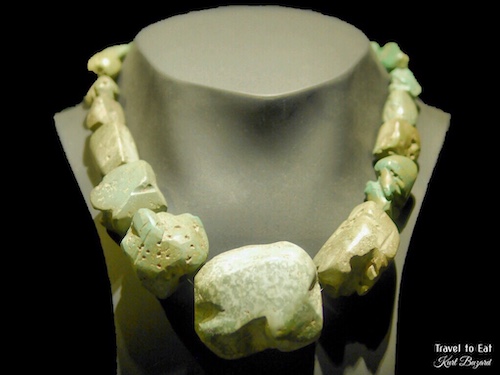
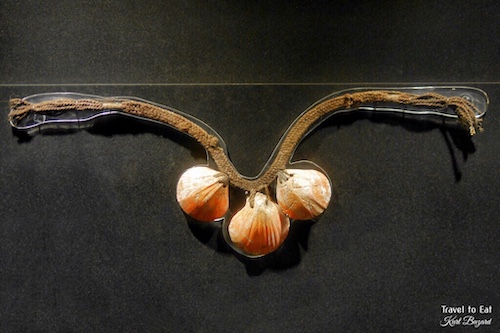
“Necklaces made from gemstones and seashells adorned the leaders of the societies of ancient Peru and formed part of their funerary offerings. The stones used included black porphyry, blue sodalite, translucent quartz and blue chrysocolla, from different regions of Peru. They also used Spondylus shells from the warm waters of Ecuador. The use of these objects made from exotic materials differentiated the leaders from the rest of the population. To this end, the leaders controlled the trade networks, thereby ensuring their exclusive access to these materials.” Larco Museum
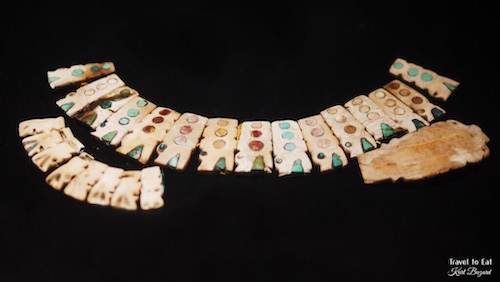

“From very early times (1250 BCE to 800 CE), ancient Peruvians valued gemstones such as chrysocolla, turquoise, sodalite, lapis lazuli, quartz and amethyst. They used them to make beads of varying sizes for necklaces and bracelets which in some cases were combined with copper and silver beads. These personal adornments were as important as those made from precious metals and exotic seashells. In ancient Peru shells and bones were used to make sophisticated and detailed designs. The majority of these depicted sacred serpents, toads and fish. Human figures can also be seen. These small pieces were used to make the necklaces, bracelets and breast plates with which members of the elite were adorned.” Larco Museum
Silver and Gold
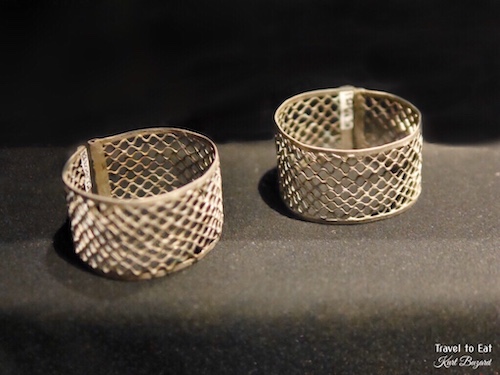
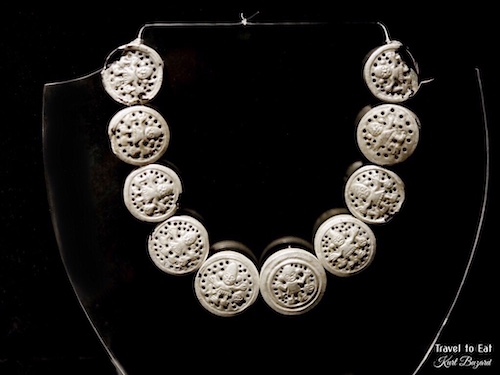
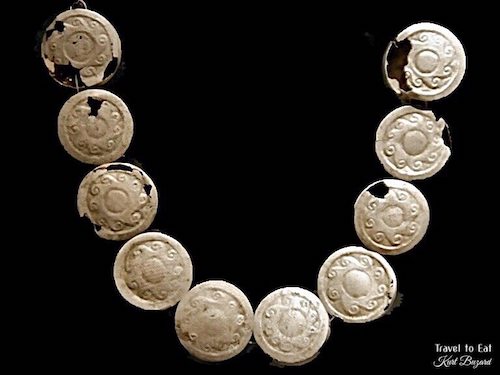

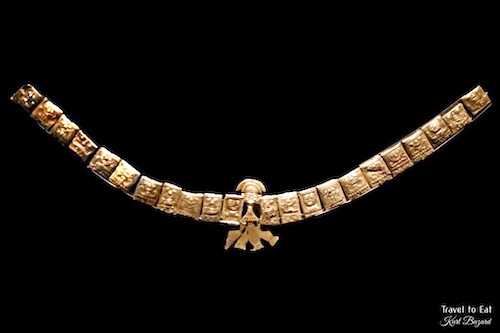
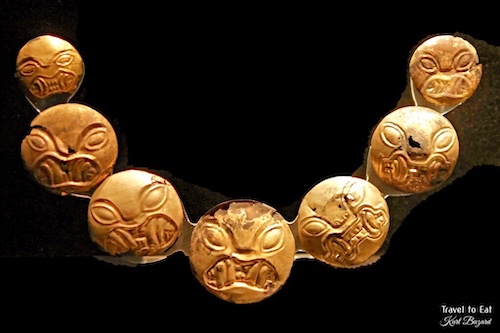
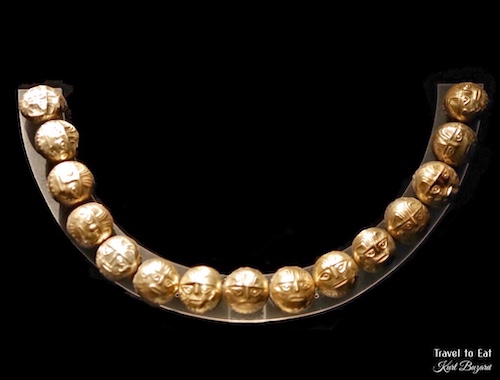
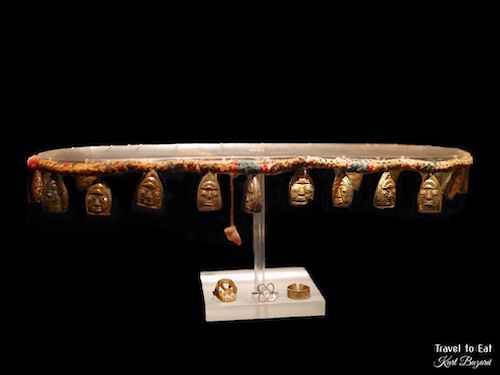
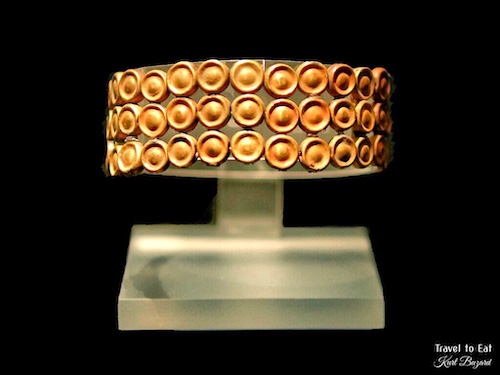
“For ancient Peruvians, in symbolic terms gold and silver were complimentary. Through their color and brightness both metals were associated with the concept of duality. Gold represented the sun, the day and all that was masculine, while silver represented the moon, the night all that was considered feminine. The clothing and funeral offerings of the pre-Columbian elite were decorated with plaques made from these precious metals. Although these pieces were invariably small and delicate, they were finely worked to display symbolic elements in great detail. In necklaces, flaps, diadems and bracelets we can identify figures both human and divine, as well as heads of serpents, felines and other animals. These pieces are from the northern coast of Peru from 1 to 1532 CE.” Larco Museum
Nose-Rings
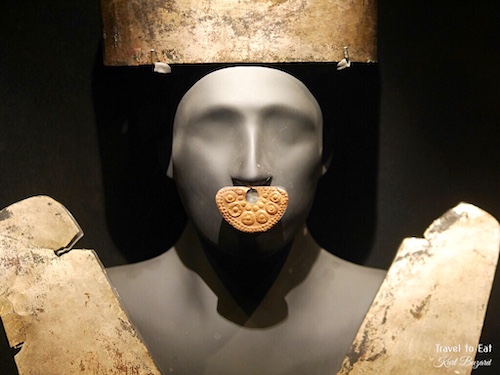
“One of the most important pieces of jewelry was the nose ring, or narigurea. Up to 4 inches wide, they were hammered down to featherweight thinness. The ring on top of the decoration was open, so it would painlessly attach onto the external naris, the piece of skin just below the nasal vestibule, which separates the nostrils. Nose rings appear to have generally been a male status symbol. Metallurgy in the Americas first developed in South America before traveling north.” Larco Museum
Ear Plugs

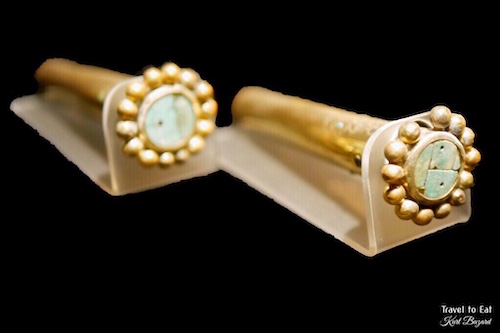
“Throughout history and in many cultures, the human body has not only been decorated but actually transformed through tattooing, piercings and deformations. Some parts of the body, such as the lips, ears and skull, have been modified through processes which last a lifetime. Ear ornaments were one of the most significant adornments used to distinguish those individuals in power in Andean societies. When the Spanish arrived they called the Inca nobles “orejones” in reference to the size of their ears which were enlarged by the adornments that they wore. Some of these ear ornaments were so heavy and large that they were held in place by bands wrapped around the wearer’s head.” Larco Museum
Vicús (1250-1 BCE)
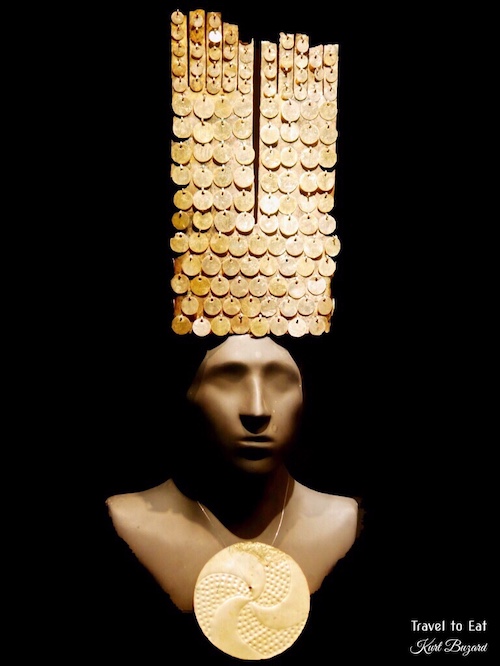

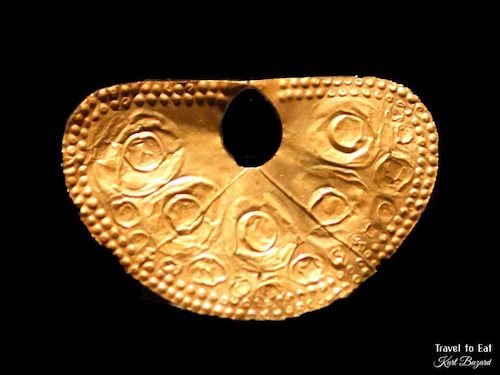
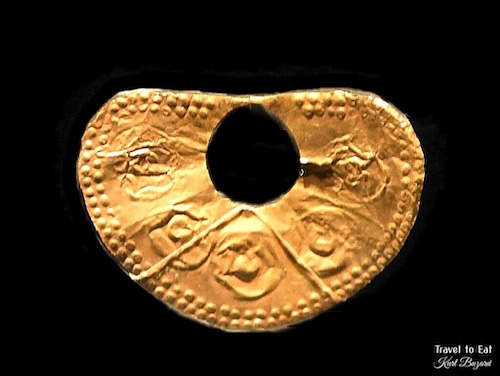
“Vicús nose ornaments made from gold and gilded copper alloys were hung from the cartilage between the nostrils. Their gold color and concentric circular decoration symbolized the jaguar, which was represented often in the art of ancient Peru, especially among the cultures of the Formative Epoch. The jaguars pelt was represented in stone sculpture and pottery with the same circular symbols. Within the world view of South American cultures, the jaguar has also been linked with the sun and, therefore, with gold.” Larco Museum
Chimú (1300-1532 CE) North Coast

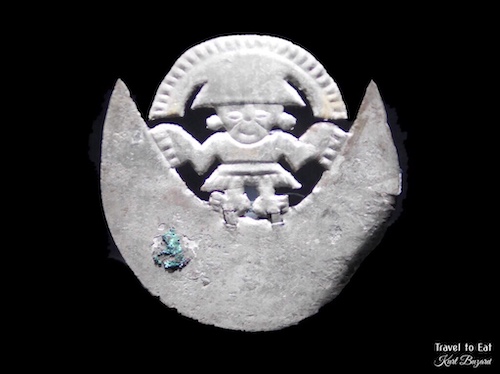
Silver, associated with the nighttime world of the moon and stars, was also linked with the world of the dead. In the Andean region, the world of the dead was identified with both the ocean and the dark depths of the humid earth. In other words, life began and ended in water. It Is interesting to note that the iconography of the nose and ear ornaments which accompanied the deceased members of the Chimú elite are associated with the figure of the deceased ruler at the center of the stepped structures. These structures may be representations of the funerary platforms in which rulers were laid to rest. The other motifs which can be seen are related to water, and they include fish, seabirds and Spondylus shells.
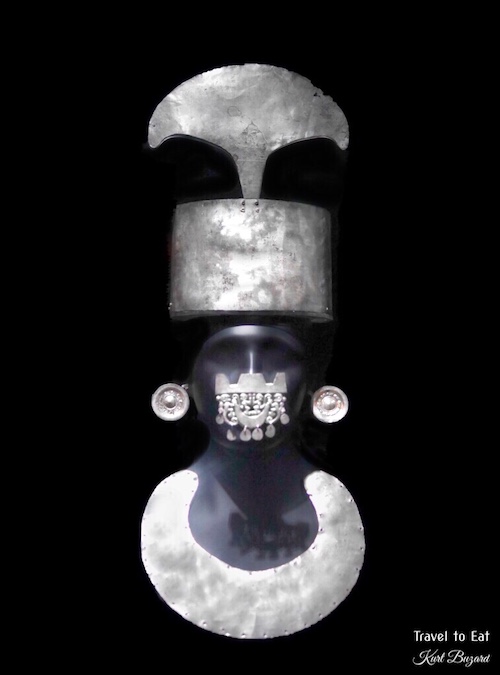
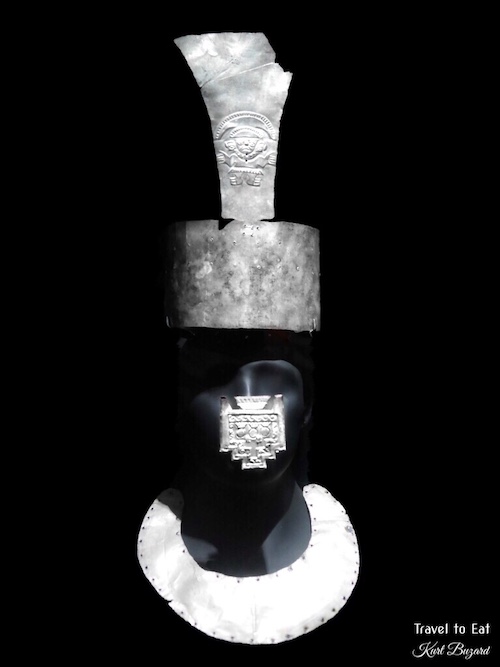
“In today’s world, for economic reasons, we consider gold a precious metal. However, in ancient Peru gold and silver were accorded equal importance, while weavings and seashells such as Spondylus enjoyed equal prestige. The attire of the leaders of ancient Peru was composed of a number of metal decorative elements made from gold, silver, copper and alloys. In nature, silver is not easily found in its pure metallic state, and great skill and technical knowledge are required for its processing. Silver was first worked a thousand years before Christ, but it was during the height of the Chimú Empire, from the 12th to the 15th century, that such exploitation reached its greatest level of technological sophistication. In societies like Chimú, silver was used in the attire of the nobility. Crowns, diadems, breastplates, ear ornaments, nose ornaments, necklaces and bracelets formed the offerings placed in the tombs of the elite. The iconography on these objects was associated with the ancestor or deceased ruler, who would be surrounded by other figures with the forms or features of felines and birds.” Larco Museum

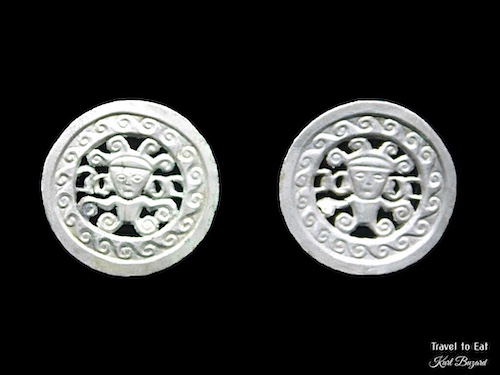
“Ear ornaments were one of the personal adornments which most clearly indicated the status of those who wore them. Their quality, size and iconography communicated the social position and identity of the wearer. Silver Chimu ear ornaments feature scenes depict the gathering of Spondylus shells from the sea as well as representing a ruler or deified ancestor. This individual appears surrounded by step motifs symbolizing the sacred architecture of his burial site.” Larco Museum
Moche (1-800 CE)

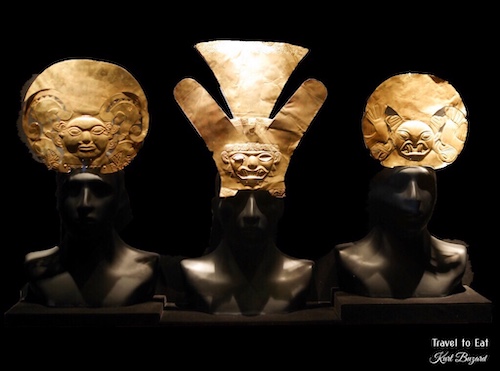

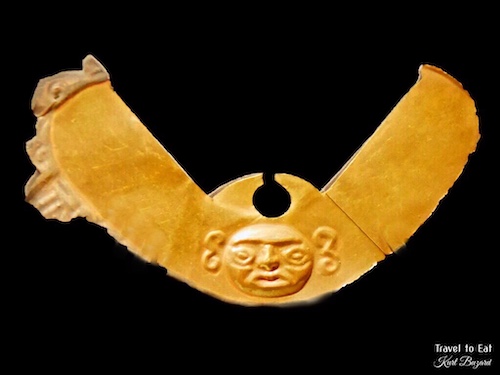
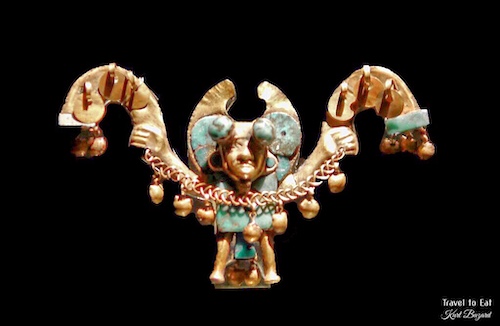
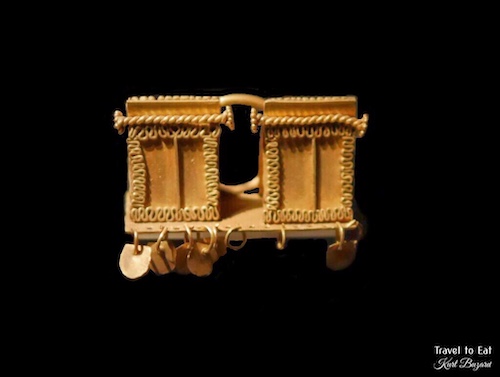
Among the personal ornaments of the political and religious leaders of Moche society, nose ornaments were particularly significant. They were used as a clear indication of the status of those who wore them, as well as to ritually transform those individuals into supernatural beings. Some nose ornaments resemble the whiskers of felines, while others display the symbols associated with the decapitator gods of the Moche pantheon, with the characteristic V-shape which also appears on the headdresses of some individuals. Gold, gilded copper and silver were used to make these nose ornaments. Bimetallic nose ornaments made from gold and silver illustrated the concept of duality so essential to the Andean world view.
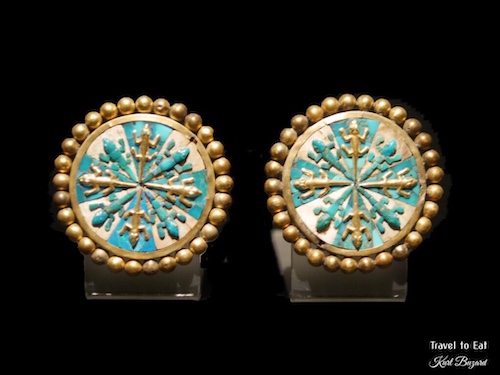
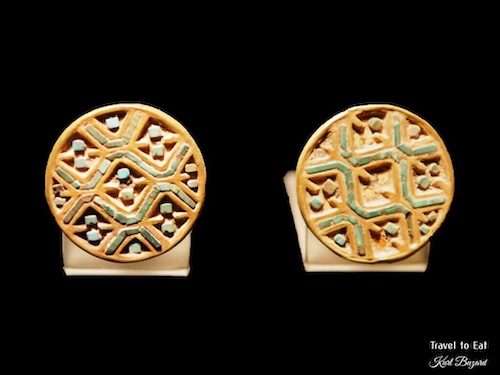
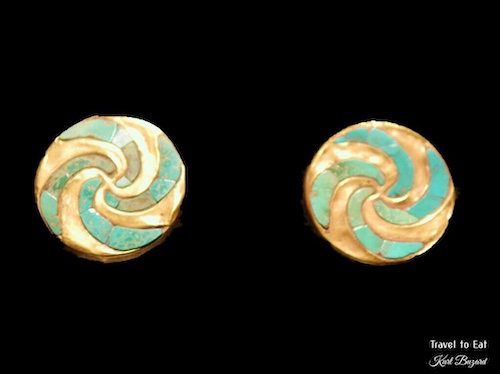
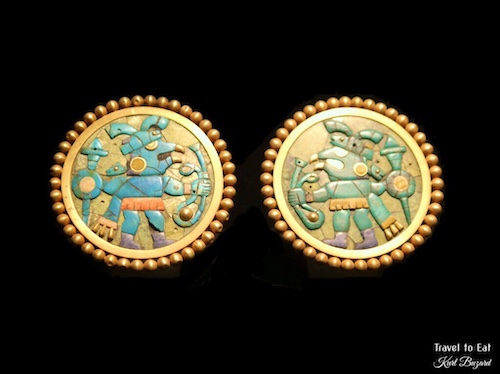
“In Moche ear ornaments we can see magnificent work in the form of mosaics inlaid with gemstones such as chrysocolla, sodalight and tourquois, as well as mother of pearl and Spondylus shells. The diverse nature of the materials used in these exclusively prestigious ornaments indicates participation by the ruling elites in long distance trade. The designs on the discs of the ear ornaments feature rhombus, spirals, iguanas and bird warriors. Some of the rods of these ear ornaments were also finely decorated with depictions of ceremonial combat.” Larco Museum, Lima
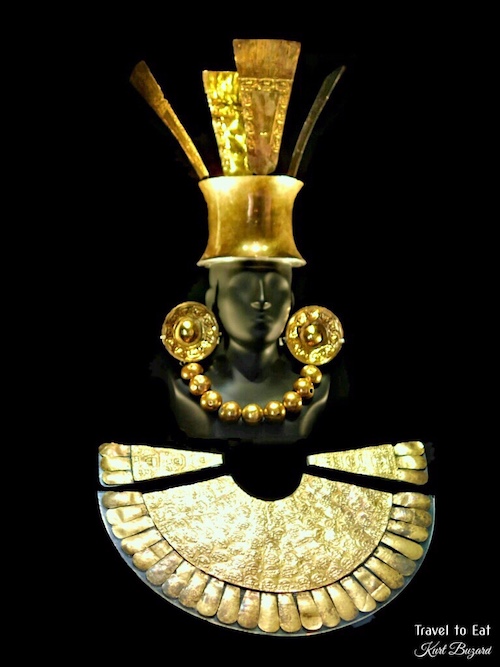
“The Chimú were the greatest metalworkers of ancient Peru. This is the only known complete set of gold Chimú clothing in the museums and private collections of the world. The little that is known about its origin indicates that it was once part of the funerary offering of a great lord who. was buried in the mud brick city of Chan Chan,the capital of the Chimú kingdom. It expresses all the great splendor of the power enjoyed by the ruler who wore it together with his symbolic relationship with the sun. This elaborate dress includes plumes in the crown and the borders of the breastplate. These plumes represented birds, which were believed to be the only creatures able to approach the sun. The ear ornaments feature a repeated image of the face of the great lord of Chimú seen from the front, in the epaulettes he appears standing and seen from the front, holding decapitated heads in each hand. In the plumes of the crown and breastplate a procession of individuals shown in profile with feline features and wearing half-moon headdresses can be seen.” Larco Museum
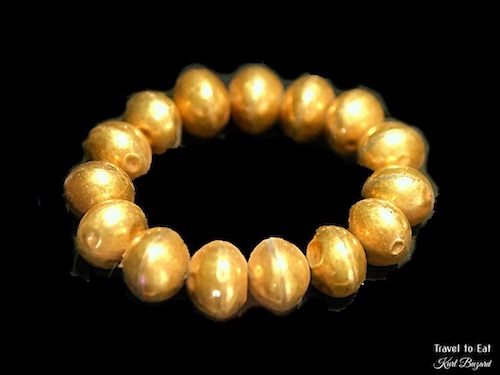
This has been a long post of beautiful artifacts. As always, please leave a comment.
[mappress mapid=”173″]
References:
Larco Museum: http://www.museolarco.org/en/
Colored Stones: http://geology.com/gemstones/gems/
Gemstones: http://geology.com/gemstones/
Chrysocolla: http://www.gemselect.com/gem-info/chrysocolla/chrysocolla-info.php
Pre-Columbian Peruvian Cultures: http://theonlyperuguide.com/2012/03/pre-columbian-cultures-in-the-north-of-peru/
Nose Rings: http://ethnicjewelsmagazine.com/nose-rings-in-pre-columbian-civilizations-by-barbara-steinberg/
Vicús Culture: http://news.nationalgeographic.com/news/2008/02/080220-vicus-pyramids.html
Nazca Culture: http://people.umass.edu/proulx/online_pubs/Nasca_Overview_Zurich.pdf
Moche: http://www.metmuseum.org/toah/hd/moch/hd_moch.htm
Moche BBC: http://www.bbc.co.uk/sn/tvradio/programmes/horizon/peru_prog_summary.shtml

